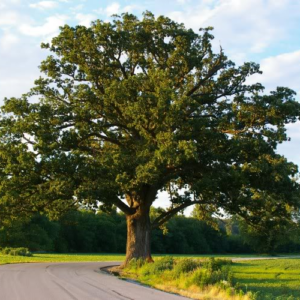Description
Type: Deciduous tree
Family: Fagaceae
Height:50-60 feet
Spread: 50-60 feet
Native Range: Eastern US, upland hills throughout Missouri
Site Requirements:
Soil: moist rich to poor dry
Water: Dry to medium
Sunlight needs: Full sun
Landscape use: A medium shade tree for lawns, streets or parks.
Brief Description: Similar in appearance to red oak (Quercus rubra) with which it may on occasion hybridize. Buds are a significant difference between the two trees (hairless and smaller in red oak). Bark is almost black on mature trunks with deep furrows. Inner bark is yellow to orange. Specific epithet means velvety or hairy in reference to the fine hairs found on buds and young leaves.
Wildlife Benefits: Acorns are an important food source for wildlife
Possible Problems: Black oak is infrequently attacked by the common diseases of oaks which include oak wilt, chestnut blight, shoestring root rot, anthracnose, oak leaf blister, cankers, leaf spots and powdery mildew. Potential insect pests include scale, oak skeletonizer, leaf miner, galls, oak lace bugs, borers, caterpillars and nut weevils.
Read more here.
Additional information
| Common Name | black oak |
|---|---|
| Scientific Name | Quercus velutina |
| Native Range | Eastern United States, southeastern Canada |
| Zone | 3 to 9 |
| Height | 50.00 to 60.00 feet |
| Spread | 50.00 to 60.00 feet |
| Bloom Time | April to May |
| Bloom Description | Yellowish-green |
| Sun | Full sun |
| Water | Dry to medium |
| Maintenance | Low |
| Suggested Use | Shade Tree, Street Tree |
| Flower | Insignificant |
| Fruit | Showy |
| Tolerate | Black Walnut |
| Leaf | Good Fall |





